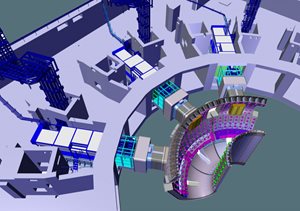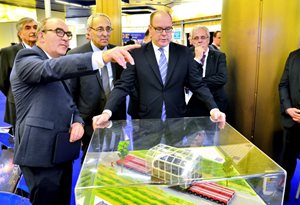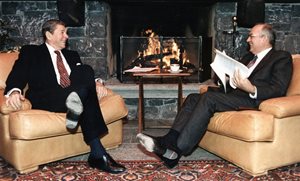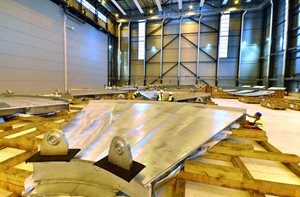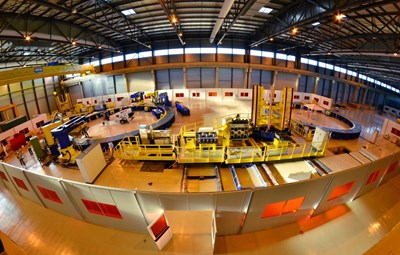
Reels, de-spoolers, a winding table, impregnation moulds ... little by little the 12,000 m² Poloidal Field Coils Winding Facility is being equipped with specialized tooling.
If the top and bottom coils (see image below) are small enough to be produced off site and transported to ITER, the size of the four others precludes any transport by public waterway or road. For these massive machine components the European Domestic Agency has built the on-site Poloidal Field Coils Winding Facility, a 257-metre building with 12,000 metres of surface area and a circular spreader beam overhead for handling the components during the assembly process.
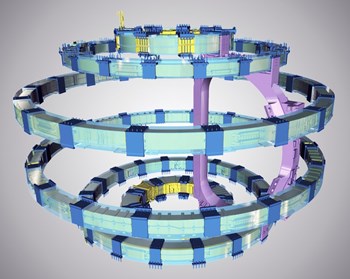
Six poloidal field coils, ranging in diameter from 8 to 24 metres, will encircle the vacuum vessel to shape and stabilize the plasma.
As they come off the spools, the lengths of poloidal field conductor will be straightened, cleaned, insulated with glass-fibre tape, and finally wound into spirals called double pancakes. Weighing 16 to 35 tonnes, these double pancakes are transferred to another station for vacuum pressure impregnation (VPI) with epoxy resin in order to harden into rigid assemblies.

